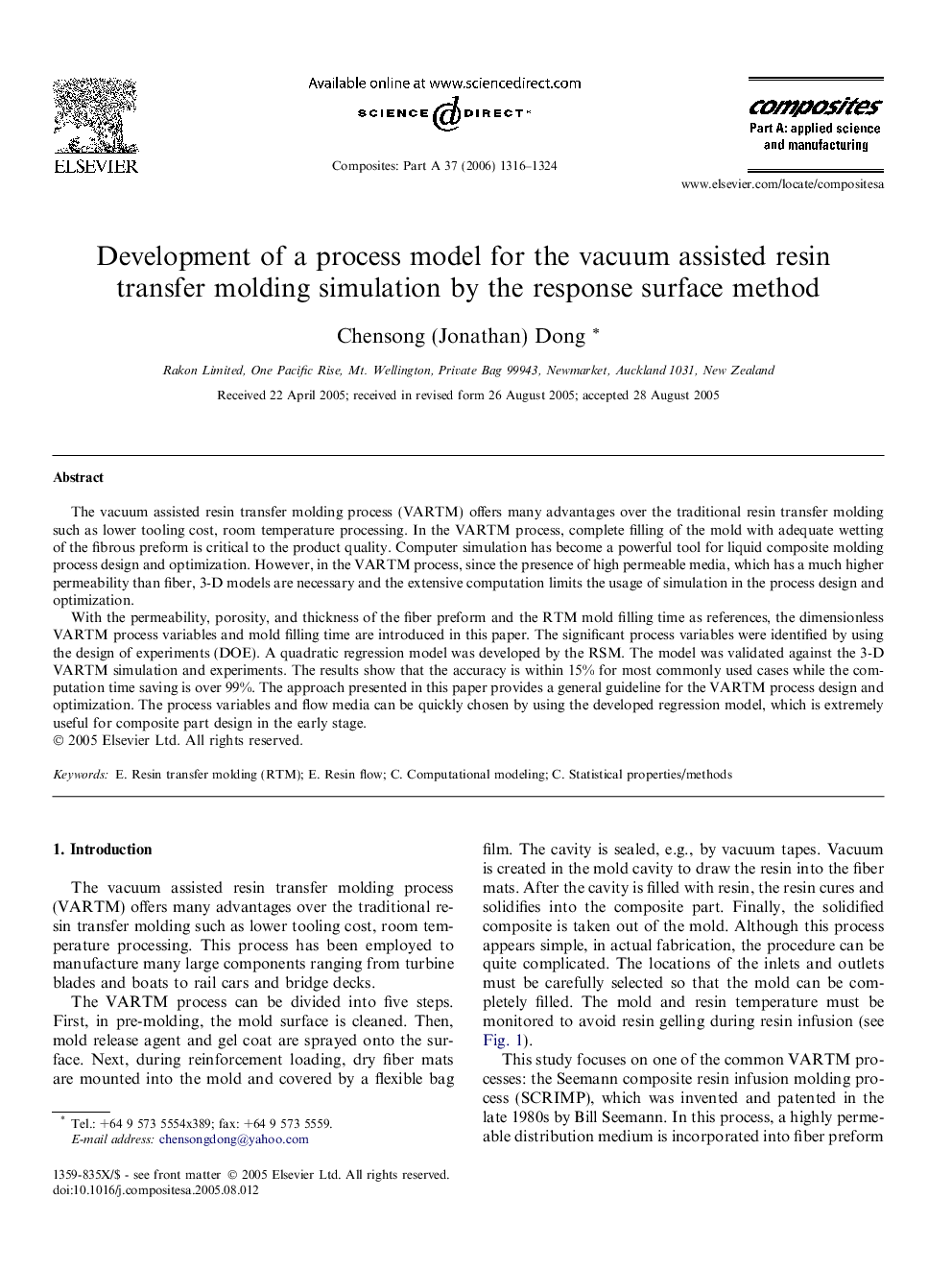| Article ID | Journal | Published Year | Pages | File Type |
|---|---|---|---|---|
| 1468052 | Composites Part A: Applied Science and Manufacturing | 2006 | 9 Pages |
The vacuum assisted resin transfer molding process (VARTM) offers many advantages over the traditional resin transfer molding such as lower tooling cost, room temperature processing. In the VARTM process, complete filling of the mold with adequate wetting of the fibrous preform is critical to the product quality. Computer simulation has become a powerful tool for liquid composite molding process design and optimization. However, in the VARTM process, since the presence of high permeable media, which has a much higher permeability than fiber, 3-D models are necessary and the extensive computation limits the usage of simulation in the process design and optimization.With the permeability, porosity, and thickness of the fiber preform and the RTM mold filling time as references, the dimensionless VARTM process variables and mold filling time are introduced in this paper. The significant process variables were identified by using the design of experiments (DOE). A quadratic regression model was developed by the RSM. The model was validated against the 3-D VARTM simulation and experiments. The results show that the accuracy is within 15% for most commonly used cases while the computation time saving is over 99%. The approach presented in this paper provides a general guideline for the VARTM process design and optimization. The process variables and flow media can be quickly chosen by using the developed regression model, which is extremely useful for composite part design in the early stage.
